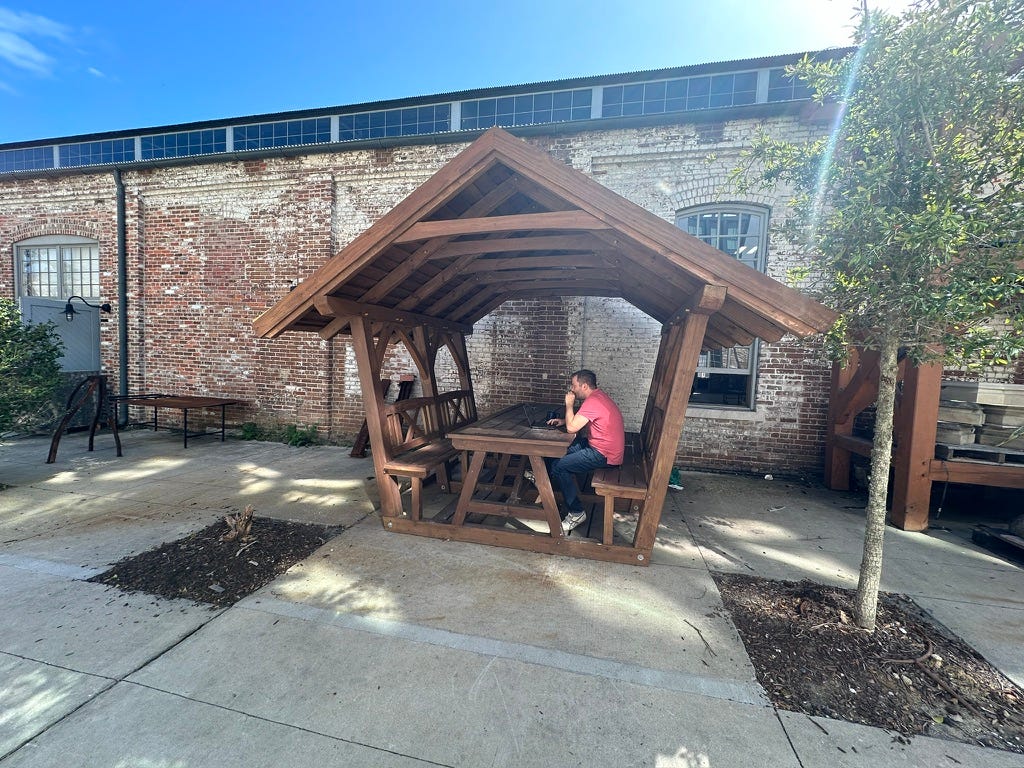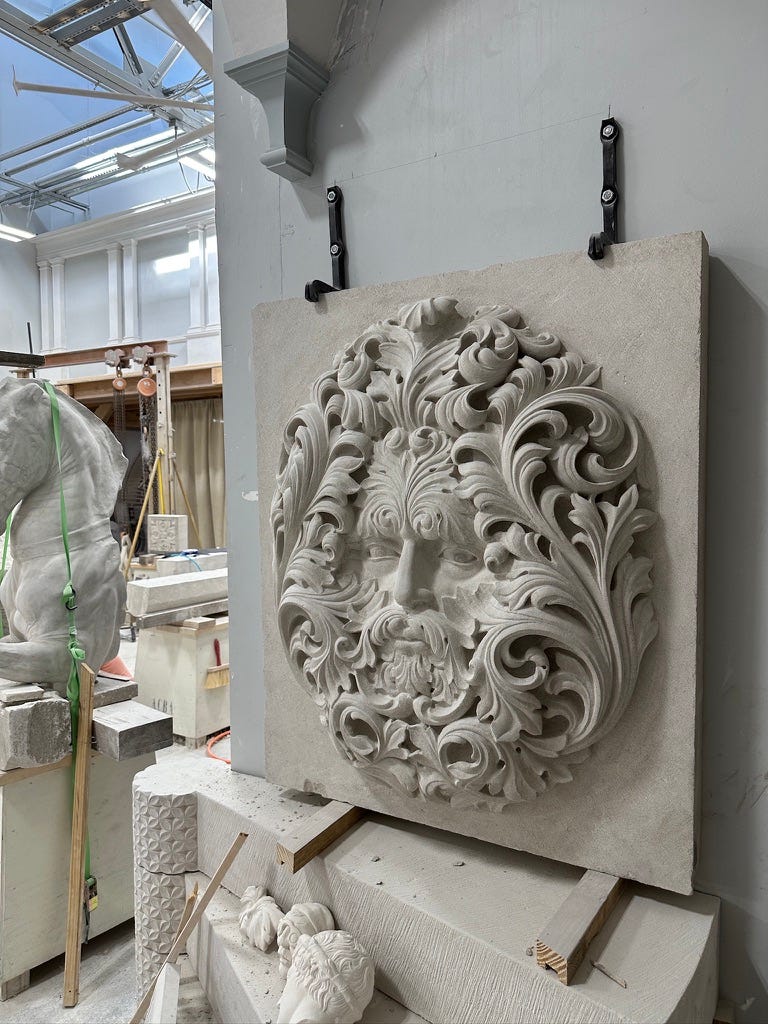Dear Boss,
I’ve just returned from a visit to the Most Magical Place on Earth, the American College of the Building Arts (sorry, Disney World). The ACBA is a traditional trades school in Charleston, SC. Located on the edge of Downtown Charleston, the ACBA trains students to restore beautiful architecture and to create new, beautiful crafts. As I walked through its small campus, I encountered an overwhelming number of items wonderfully made from stone, wood, plaster, and iron. Some of these items were gargantuan projects made by seniors as their capstone project, others were smaller (but still wonderful) items produced by freshmen and sophomores. Invariably, each item was terribly impressive.
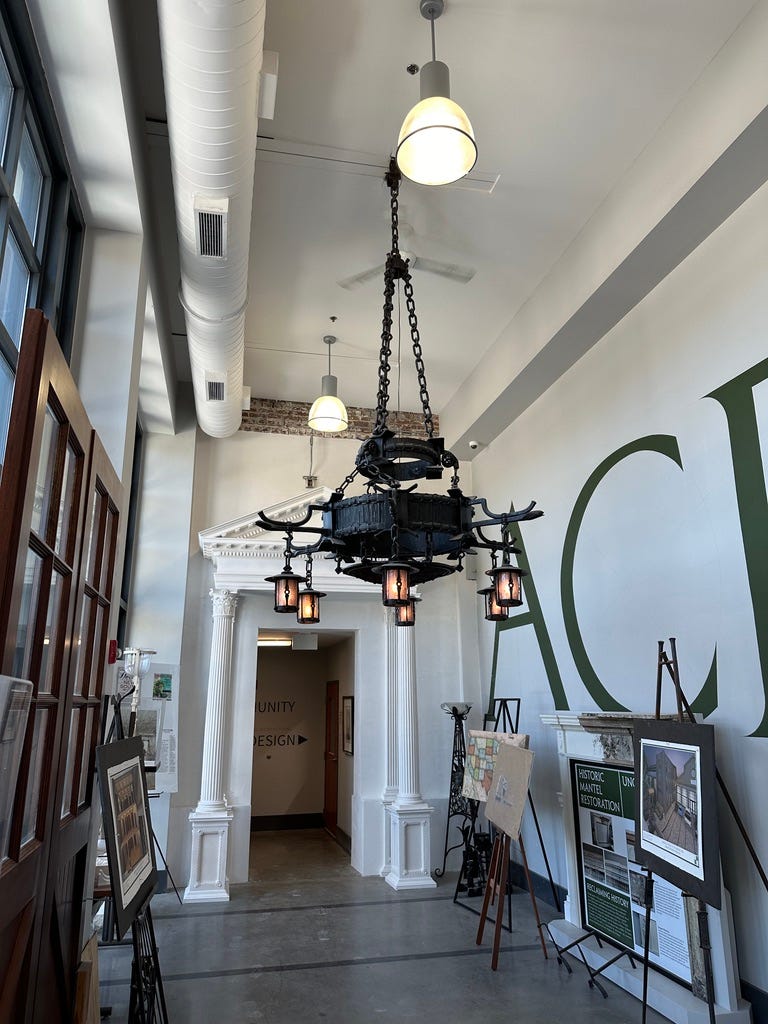
The ACBA was started in 2004 as a response to the destruction wrought by Hurricane Hugo. Hugo swept through Charleston and damaged many of their historic buildings. These buildings were made with traditional materials and techniques; plaster walls were ruined, stone ornaments were shattered, and wooden porches were swept away. The rebuild of Charleston took much longer than expected due to a lack of skilled tradesmen in the area. With this shortage in mind, a group began the ACBA to train new artisans in the traditional trades.
ACBA’s current success was not guaranteed, despite its obvious need in the City of Charleston. Early leadership saddled the school with excessive debt, an initial lack of accreditation prevented students from receiving federal student loans, and miscellaneous constraints made it difficult to attract students. As the school was failing, General Colby Broadwater III was brought in as President to right the ship. Under Gen. Broadwater’s leadership, the school has now escaped its debt, renovated a wonderful location for its current campus, and is well on its way to educating 200+ students annually.
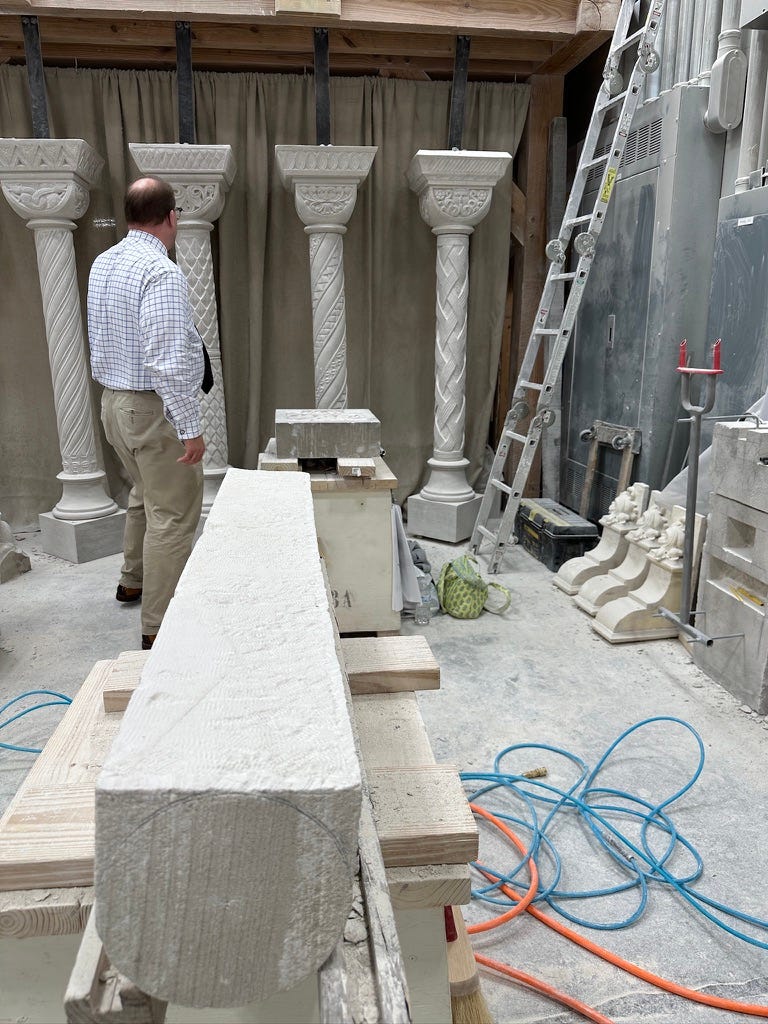
Today, ACBA offers a liberal arts education combined with an emphasis in one of six trades: plasterwork, architectural carpentry, timber framing, stonework, classical architecture and design, and ironwork. These trades are all integral to the buildings of Charleston; the ACBA is a natural outgrowth of the city’s needs. With that in mind, a similarly oriented school in Hillsdale would adjust to the needs of our own region. One skilled trade that would be found in such a school would be masonry. If you visit any historic downtown in Michigan, you’ll be greeted by countless brick buildings that reward further study with intricate details and fine precision. Many of these buildings are also falling apart and it can often be difficult to find highly skilled masons to provide proper repairs.
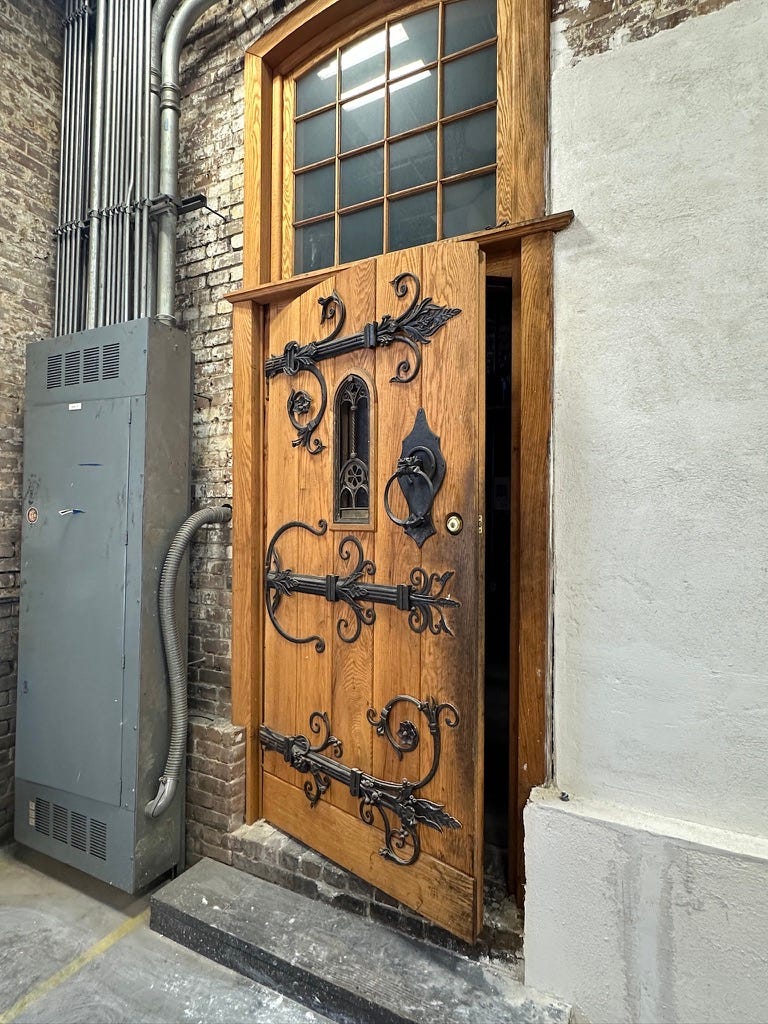
ACBA’s graduates are greeted with immediate opportunities in the trades that they study. Their current graduate placement rate is just under 90%, but the 10% that do not pursue jobs in their trades are taken away by other life circumstances. One or two are called back into military service, another two or three become mothers and decide to stay home with their children. One has to go home to help with ailing parents. If life proceeded according to plan, 100% of ACBA graduates would have jobs in their trades upon graduation. And these jobs are generally quite interesting. A good number of graduates end up in Europe, repairing ancient cathedrals. Many of them stay in America and preserve our nation’s finest architecture.
After visiting ACBA, I am convinced that such a school in Hillsdale is not only possible, it is necessary if we wish to continue enjoying beautiful towns and homes. ACBA leadership told me one anecdote during my visit that drove home how necessary these schools are. In Washington, D.C., there is a team of 2,500 people, many of whom are traditional tradesmen, who maintain the national monuments, Library of Congress, and Supreme Court, among other buildings. In just five years, 60% of this team (1,500) will be up for retirement. Leadership from that trades team visited ACBA recently to explore their program and they were excited by what they saw, but there is simply no way for ACBA to scale up to meet that demand in a timely manner. ACBA only plans to grow to around 250 students, meaning that only 60 or so will graduate in any given year.
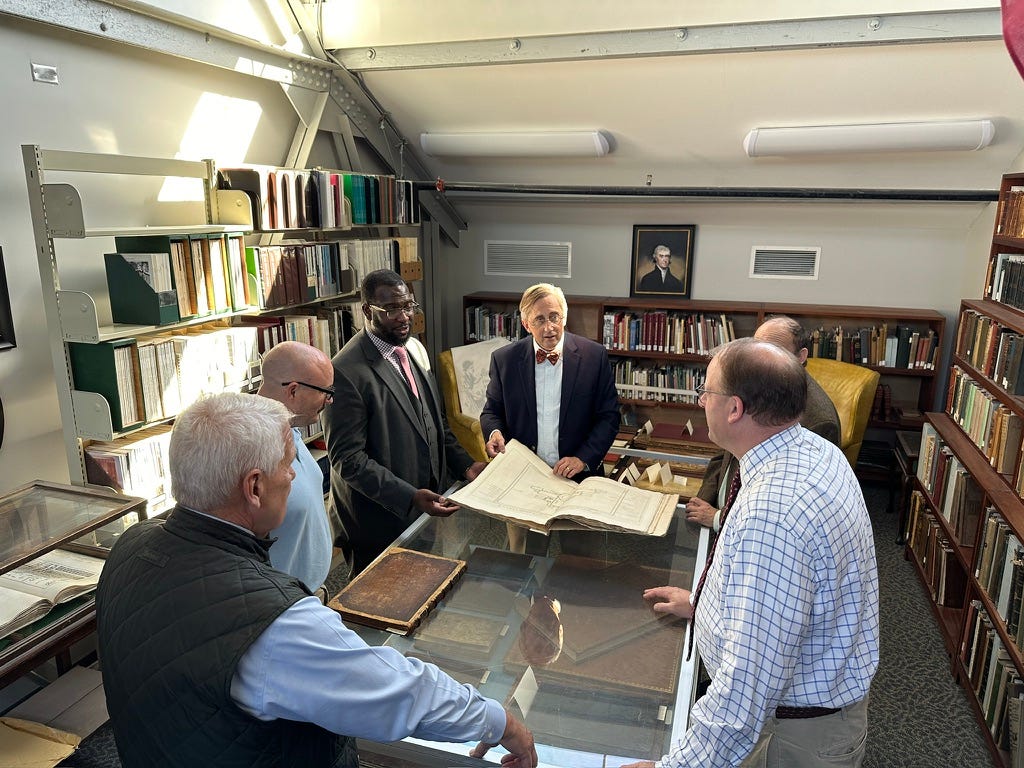
That anecdote only relates to one city (albeit one with an inordinate amount of demand for this kind of work), think of how much need exists across the nation. Just in Hillsdale’s region, there would be significant demand in Chicago, Detroit, Ann Arbor, and Lansing. Any town with a traditionally-built church would have need for one of these graduates if the church’s parishioners desire to maintain their building according to its original standards. There are a number of these tradesmen scattered around the region currently, but many are aging out of the workforce. For example, the average age of a carpenter hovers around 53 today.
So, given that I think this project is feasible and needed in Hillsdale, what steps need to be taken to make it happen? First, I should commission a study of the region’s material needs. Questions to be answered would be: 1) which trades are most used in the traditional buildings of the Michiana area; 2) how many tradesmen currently service these buildings and where are they located; 3) what trades are currently being trained in our area and how many students are being trained; and 4) how many tradesmen could potentially teach at such a school in Hillsdale?
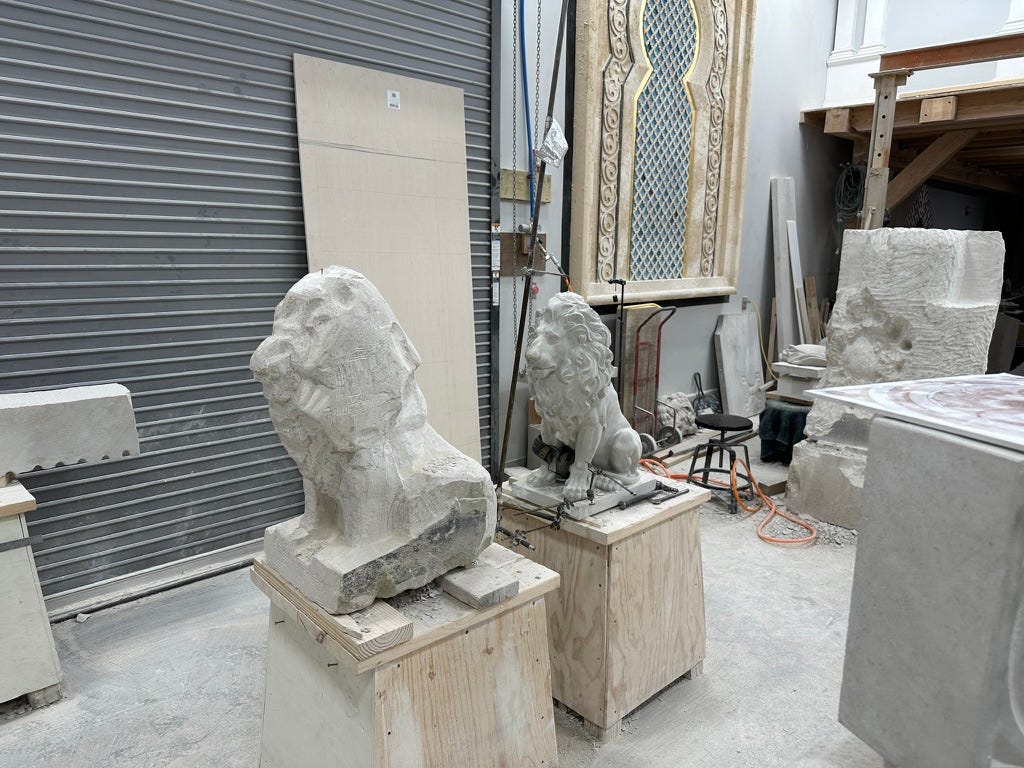
As that study is conducted, I also need to source members for a board. I would like to fill a number of slots with: a classical architect; a tradesman; someone with significant experience on other boards; someone with access to money; and someone who knows how to manage money well. I am probably missing one or two other important roles for the board, but I believe that a board constructed of people with these experiences can set up the necessary oversight, recording, and control mechanisms to allow the school to run smoothly.
Once the board is constituted, we can file for 501(c)(3) non-profit status, identify Head of School candidates, and pursue institutional partnerships. Simultaneously, we will need to restore the building that will house the college. This whole process will likely take two to four years, but the end result will be more than worth it.
Such a school is not only a great opportunity for students, it is also an affirmation of America’s past and a bet on her future. Despite modern trends, America has a wonderful tradition of architecture. Most great American cities, and certainly many small, historic downtowns, feature gorgeous brickwork, stonemasonry, blacksmithing, and carpentry, among other trades. If we are to remain worthy inheritors of the Western Tradition, we ought to maintain the built environment that has fostered that tradition. If we can maintain that tradition, perhaps we can also learn to fulfill it.
After witnessing the creation and recreation of this beauty, I think it fitting to end this post with an excerpt from Aleksandr Solzhenitsyn, taken from his 1970 Nobel Prize acceptance speech:
"One day Dostoevsky threw out the enigmatic remark: ‘Beauty will save the world’. What sort of a statement is that? For a long time I considered it mere words. How could that be possible? When in bloodthirsty history did beauty ever save anyone from anything? Ennobled, uplifted, yes – but whom has it saved?
There is, however, a certain peculiarity in the essence of beauty, a peculiarity in the status of art: namely, the convincingness of a true work of art is completely irrefutable and it forces even an opposing heart to surrender. It is possible to compose an outwardly smooth and elegant political speech, a headstrong article, a social program, or a philosophical system on the basis of both a mistake and a lie. What is hidden, what distorted, will not immediately become obvious.
Then a contradictory speech, article, program, a differently constructed philosophy rallies in opposition – and all just as elegant and smooth, and once again it works. Which is why such things are both trusted and mistrusted.
In vain to reiterate what does not reach the heart.
But a work of art bears within itself its own verification: conceptions which are devised or stretched do not stand being portrayed in images, they all come crashing down, appear sickly and pale, convince no one. But those works of art which have scooped up the truth and presented it to us as a living force – they take hold of us, compel us, and nobody ever, not even in ages to come, will appear to refute them.
So perhaps that ancient trinity of Truth, Goodness and Beauty is not simply an empty, faded formula as we thought in the days of our self-confident, materialistic youth? If the tops of these three trees converge, as the scholars maintained, but the too blatant, too direct stems of Truth and Goodness are crushed, cut down, not allowed through – then perhaps the fantastic, unpredictable, unexpected stems of Beauty will push through and soar to that very same place, and in so doing will fulfill the work of all three?
In that case Dostoevsky’s remark, ‘Beauty will save the world’, was not a careless phrase but a prophecy? After all, he was granted to see much, a man of fantastic illumination.
And in that case art, literature might really be able to help the world today?
It is the small insight which, over the years, I have succeeded in gaining into this matter that I shall attempt to lay before you here today."




